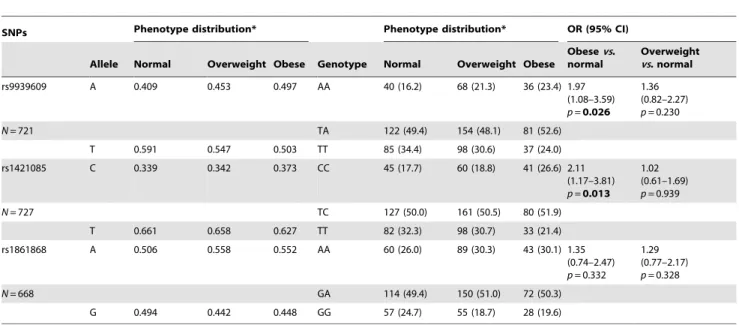Association of FTO polymorphisms with obesity and obesity-related outcomes in Portuguese children.
Texto
Imagem


Documentos relacionados
comunicação USB. Depois de escolhida a porta de comunicação será constantemente transmitida uma string que contém oito caracteres seguidos de um “carriage return”, para
LUIZ MAURICIO CAVALCANTE SALVIANO 2 e DORINI-IA MIRIAM SILBER SCHMIDT vrrri 3 RESUMO - Dezoito ovinos machos, peso médio de 34,4 kg, divididos em dois blocos, foram utiliza-
6,23,24 Our findings are consistent with those of other studies with children, 7,8,19,20,25 adults 24 and the elderly, 26 which also found no association between obesity and
The present study evaluated whether polymorphisms in the CRP (rs1205) and IL-6 (rs1800795, rs2069845) genes are associated with the development of metabolic disorders in
found that there was a direct, negative effect of self-reported impulsivity on baseline BMI indicating that those individuals with higher levels of impulsivity had lower BMI,
Having these data, we collected objective and subjective information regard- ing the signs and symptoms of the nursing diagnosis Impaired Comfort, presented by the children
Na comparação das provas de movimentos sacá- dicos dos olhos e pesquisa do nistagmo optocinético foi observada que a velocidade do movimento do olho esquerdo que se mostrou mais
Conclusions: Acanthosis nigricans in overweight and obese children and adolescents is associated with elevation of body fat, blood pressure, insulin and homeostasis model assessment